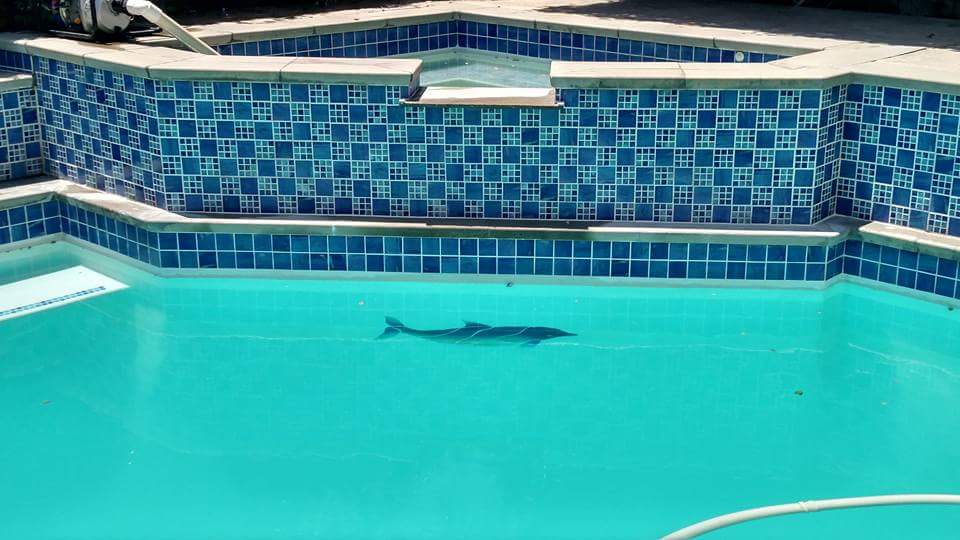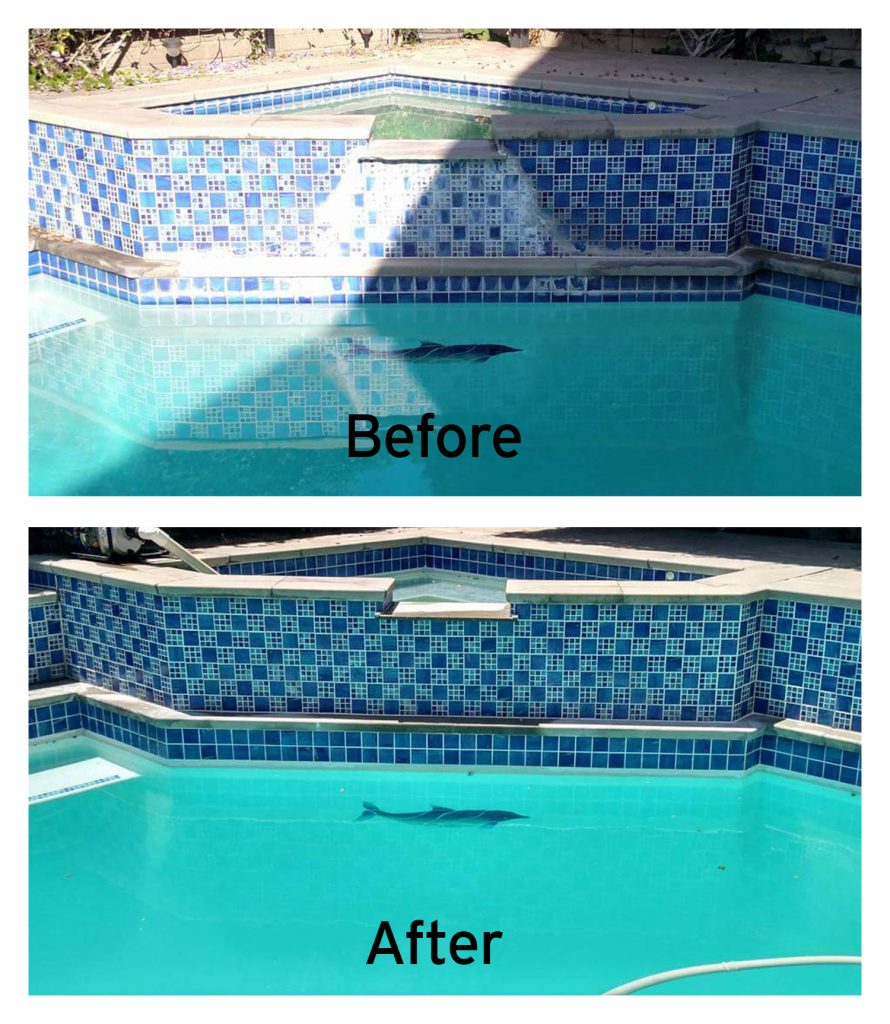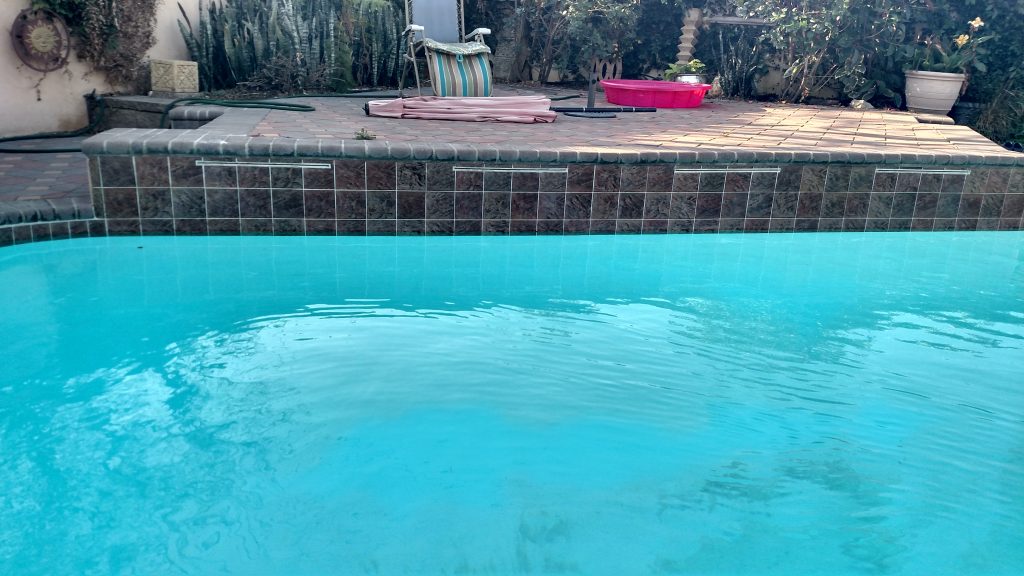A dirty swimming pool can ruin the purpose of your pool. It is very difficult to relax and swim in a pool with stained and dirty tiles. It’s an eyesore and will make you feel dirty after swimming in the pool like you just stepped out of floodwaters.
It is not supposed to be that way. So in this article, we will show you how you can easily clean your pool tiles. You can do this on a calm Saturday morning and be done in a couple of hours.
So, get your rubber gloves ready. This may impress you better than you imagine it could.
Cleaning Your Pool with Everyday Household Items
For cleaning your tile joints, mix 1/3 liter of dishwashing liquid in a liter of hot water. Rub vigorously and rinse.
Besides commercially available household cleaning products, there are several natural and affordable solutions to whiten your tile joints.
Bathroom, kitchen… Over time, grease residues, mold, and yellow stains can appear on the tile joints. To overcome this dirt and restore its shine to your joints without getting tired, there are natural tips to test without hesitation.
How to clean the tile joints?
Before cleaning the joints, first, wash the tiles around them. If they are dirty, the seals will be too. Then, to clean the tile joints you can recycle an old toothbrush which you will use as a joint brush. On the product side, you have many possibilities: white vinegar works miracles in the house, claystone, and Meudon white are very effective at cleaning joints. Black soap cleans thoroughly.
To use these natural products, soak a sponge of warm water and do not hesitate to scrub the dirtiest parts well.
What products should I avoid when cleaning tile joints?
To properly clean the tile joints, avoid using a steam cleaner repeatedly. This could take off the tiles. In the same way, forget about bleach and acid, these products toxic to health and the environment, wear out the seals, and can damage the seal. Water could then infiltrate and cause the tiles to peel off.
Which product should you use to whiten tile joints?
Weather and humidity damage the tile joints, which will then be stained and blackened. This is quite unsightly and gives the impression that the tiles are dirty and old. To whiten the joints, a miracle and natural product can be used: baking soda! Add with white vinegar and washing up liquid, the baking soda will allow you to whiten the tile joints naturally.
Let this mixture sit for a few minutes on the joints before rubbing it with a brush. They will then be white as on the first day!

Using Baking Soda in Your Pool
Do you know what harsh chemicals do to your skin and pool?
Chlorine and other chemicals have adverse effects on your skin. Continuous exposure to these chemicals leads to a lot of serious health issues. You could get asthma, cancer, or other respiratory issues.
These chemicals could react with other chemicals in the water and the air around your pool and increase the chances of you getting affected.
Fortunately, there is a natural tip for cleaning the pool liner without chemicals, even if the pool is full. The simple and effective thing is to clean it with baking soda.
Steps
1. Take baking soda
2. Sprinkle it on a sponge
3. Put yourself in the swimsuit
4. Rub the dirty mark with the sponge
5. Put baking soda back on the sponge
6. Continue around the pool.
And now, your pool is now perfectly clean without using chemicals
Easy, fast, and efficient, right?
Not to mention that it is 100% natural. Products sold commercially are so harmful that it is forbidden to bathe for 12 to 24 hours after use! It is scary, right?
With baking soda, you risk absolutely nothing. You can enjoy your pool immediately and cool off immediately. Even a baby can bathe without risk for its fragile skin.
Why does it work?
Baking soda is a great product that has incredible cleaning, stain removing, and antiseptic properties. It eliminates the dirt that forms on the waterline easily. Thanks to its grainy appearance, bicarbonate also has abrasive properties to gently loosen dirt without damaging the liner.
In addition, this trick also works very well for maintaining the pool throughout the season. Don’t worry, the bicarbonate is safe for the cover, the paint, or the walls of the pool, whether it is a shell or cement pool, whether in-ground or above ground. And you can even clean the children’s plastic pool, a freestanding pool or a tubular pool this way.

Bonus tip
Baking soda has another property. It also has a regulating action on the pH of water.
It increases the pH of the pool water when it is too acidic (between 0 and 6) and decreases it if it is too basic (between 8 and 14).
This allows you to regulate the water and obtain a neutral pH, around 7.
To test the pH of the pool water, just use test strips. It’s super easy! Soak it in water and you will immediately see the result.
If the result is not good, pour a full cup of baking soda into the water. Then leave on overnight. Test the pH of the pool water again with a new strip. If the result is still not good, start putting bicarbonate in the water again and wait overnight.
The amount of bicarbonate needed will depend on the volume of water, but also on the pH of the water before treatment.
Your turn…
Have you tested this natural trick for easy pool maintenance? Let us know in the comments if it worked for you. We can’t wait to read yours!
These are simple tips you can start implementing today and see impressive results on your pool tiles. If you don’t have the time to do this yourself and will love a professional to step in with industry-standard materials to give you a perfect swimming pool tile cleaning job, contact us.
We will love to help you bring your pool back to its former glory, looking good as new.
